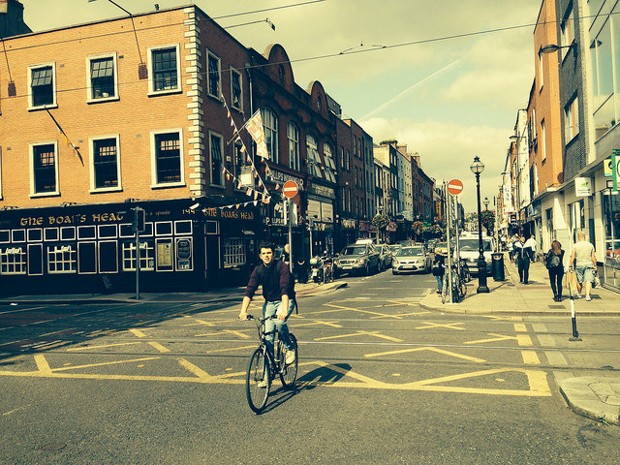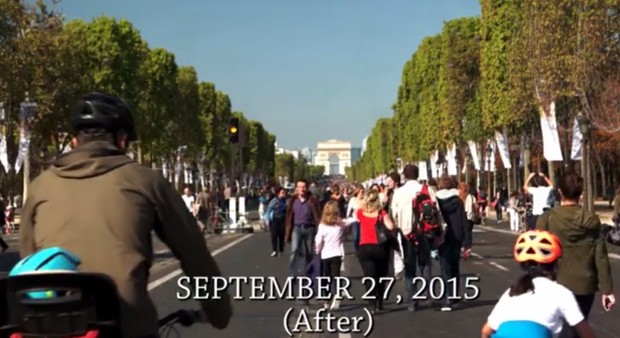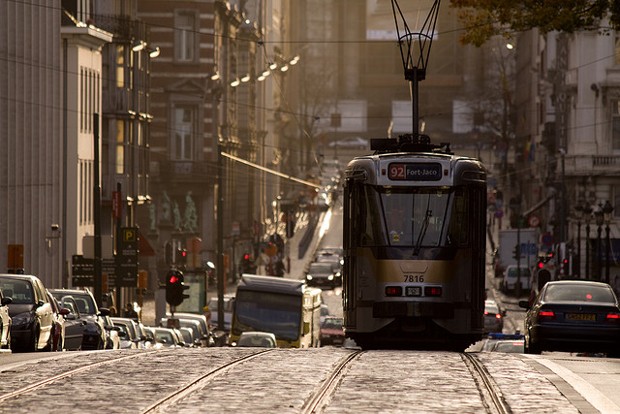Plans to ban private cars in parts of a downtown area have become so common among big European cities that it’s getting hard to keep track of them all. Since the start of 2014 alone at least six metros have announcedambitions to convert parts of their central districts into pedestrian havens with less automobile congestion and air pollution. Based on the regular reporting of our correspondent across the Pond, Feargus O’Sullivan, CityLab worked up a quick tour guide to Europe’s car-free future.
Oslo
The Norwegian capital is the latest city to declare a goal of going car-free, with reports emerging this week that private cars will be banned in the central district by 2019. Though the details are still being settled, the city will apparently enhance its bike infrastructure and give a “massive boost” to public transit. Predictably, businesses are already concerned with the idea—despite plentiful evidence that non-drivers spend as much, or even more, than people who park-and-purchase.
Milan
 Milan has big plans to put people first. (Bert Kaufmann / Flickr)
Milan has big plans to put people first. (Bert Kaufmann / Flickr)
Already home to an effective congestion pricing scheme in the city’s core, Milan made waves in July when its deputy mayor announced an ultimate goalof the “total pedestrianization of the historical center.” There’s reportedly no timeline for the plan. But the general idea is for Piazza della Scala to join two other downtown pedestrian zones and gradually stretch outward to other parts of the city. These changes—plus other car-free moves in Navigli and Piazza Missori—presaged a people-first future for Italy’s second city.
Dublin
 Bikes and buses may one day rule downtown Dublin. (Luca [JP@G] / Flickr)
Bikes and buses may one day rule downtown Dublin. (Luca [JP@G] / Flickr)
This summer the Irish capital proposed a €150 million plan to ban cars from parts of the city center as soon as 2017. Reaction was mixed, with retailers as usual wary of the plan. But others were quite enthused: “Those of us who walk or cycle around the city, meanwhile, were enthusiastic at the prospect of not having to play a real-life game of Frogger when crossing the likes of Westmoreland Street,” wrote Davin O'Dwyer of the Irish Times. The city hopes to reach a point where just one in five people commutes into the core via private car—the rest coming by transit (55 percent), bike (15 percent) or on foot (10 percent).
Paris
 The Champs-Elysees during a 2015 car-free day. (Olivier Pascaud)
The Champs-Elysees during a 2015 car-free day. (Olivier Pascaud)
Paris is no stranger to car-free restrictions. When the French capital implemented a one-day ban on odd-numbered cars in spring 2014, the result was a measurable drop in traffic congestion and pollution. Another temporary car-free day held this fall was declared by Mayor Anne Hidalgo (and visually confirmed by before-and-after videos) to be a great success. The trend will continue on a more permanent basis with news of a pedestrian zone along the right bank of the River Seine beginning in summer 2016.
Madrid
 The streets of Madrid should look more and more ghostly in the future. (Jose Maria Cuellar / Flickr)
The streets of Madrid should look more and more ghostly in the future. (Jose Maria Cuellar / Flickr)
One of the world’s strongest plans to eliminate cars from the city core can be found in Madrid. In 2015 the Spanish capital began issuing tickets to drivers who either don’t live in the central areas or don’t have a guaranteed parking space in an official lot. The rule more than doubled a limited-car zone already in place in the downtown area, with then-Mayor Ana Botella eventually hoping to pedestrianize even more of the city. Such measures built on the pedestrian-first goals outlined in the city’s recent general plan.
Brussels
 Plans to go car-free in parts of downtown Brussels have been met with mixed responses. (Riccardo Bonuccelli / Flickr)
Plans to go car-free in parts of downtown Brussels have been met with mixed responses. (Riccardo Bonuccelli / Flickr)
In early 2014 the traffic-riddled Belgian capital (derided as a “sewer for cars”) announced a plan to convert a four-lane road into a pedestrian promenade. This time businesses weren’t the only ones who objected; walking and cycling advocates don’t exactly love the idea, either. Some fear that driving won’t be eliminated but merely displaced outside the core. The complete end of car use isn’t a terribly practical goal at the moment, but the fact that some think it’s within sight shows just how far many big European cities have come.